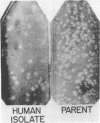Abstract
Dengue virus, type 2, in viremic human sera and after passage in cell cultures produces mixtures of small and large plaques when assayed in LLC-MK2 cells. Clones of dengue virus type 2 obtained by plaque selection in primary green monkey kidney cell cultures were tested for temperature sensitivity in vitro and for virulence by intracerebral inoculation of suckling mice. Sublines of a small-plaque clone were found to have lower nonpermissive temperatures than the parent virus by both plaque formation and release of infectious virus into the culture media. Small-plaque sublines were significantly less virulent in suckling mice than was the parent virus. Sublines from a large-plaque clone were not temperature sensitive and closely resembled parent virus mixed-plaque morphology. When small-plaque sublines were serially passaged using undiluted inocula, reversion occurred as evidenced by the appearance of large plaques and return of mouse virulence. Small-plaque virus could be maintained through several serial passages without reversion by using low-input inocula. Desirable passage history as well as temperature-sensitive and attentuation characteristics of the S-1 small-plaque subline make it appear suitable as a vaccine candidate virus.
Full text
PDF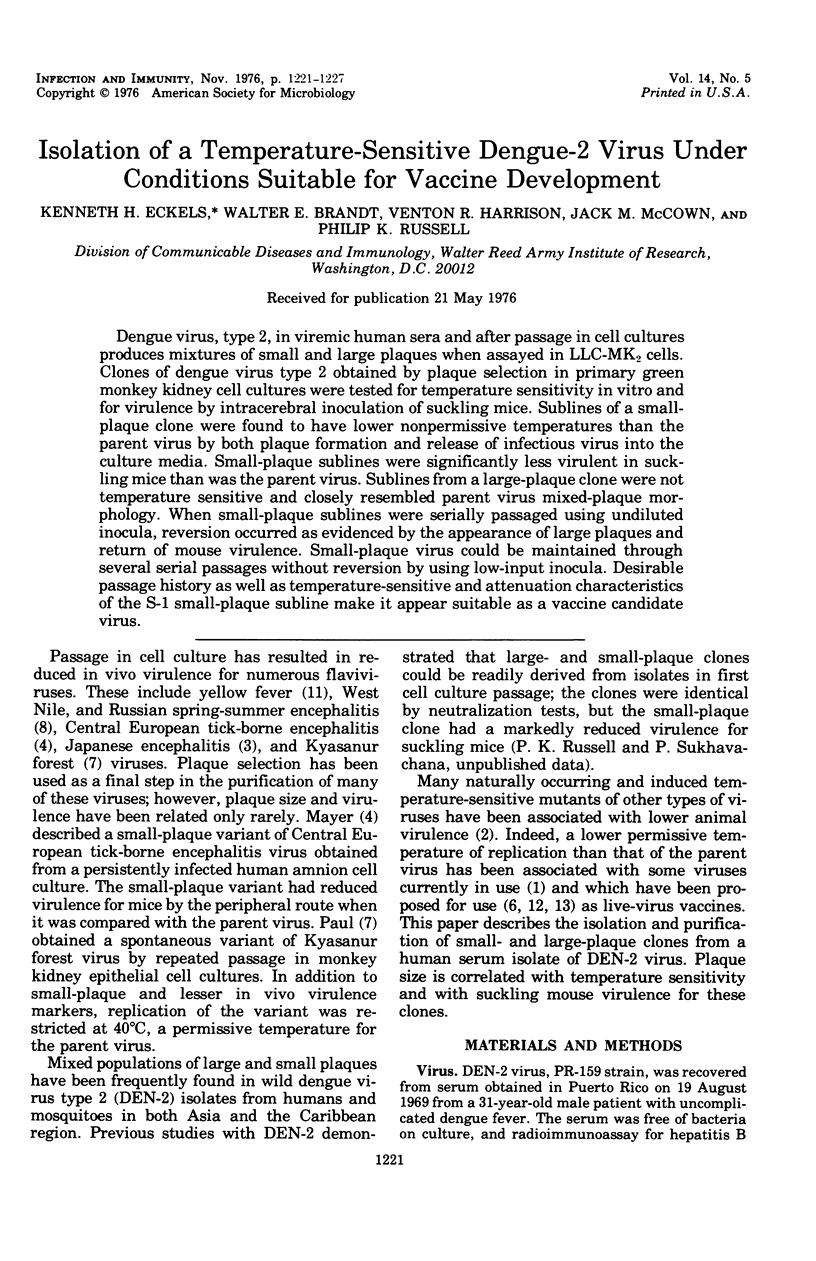
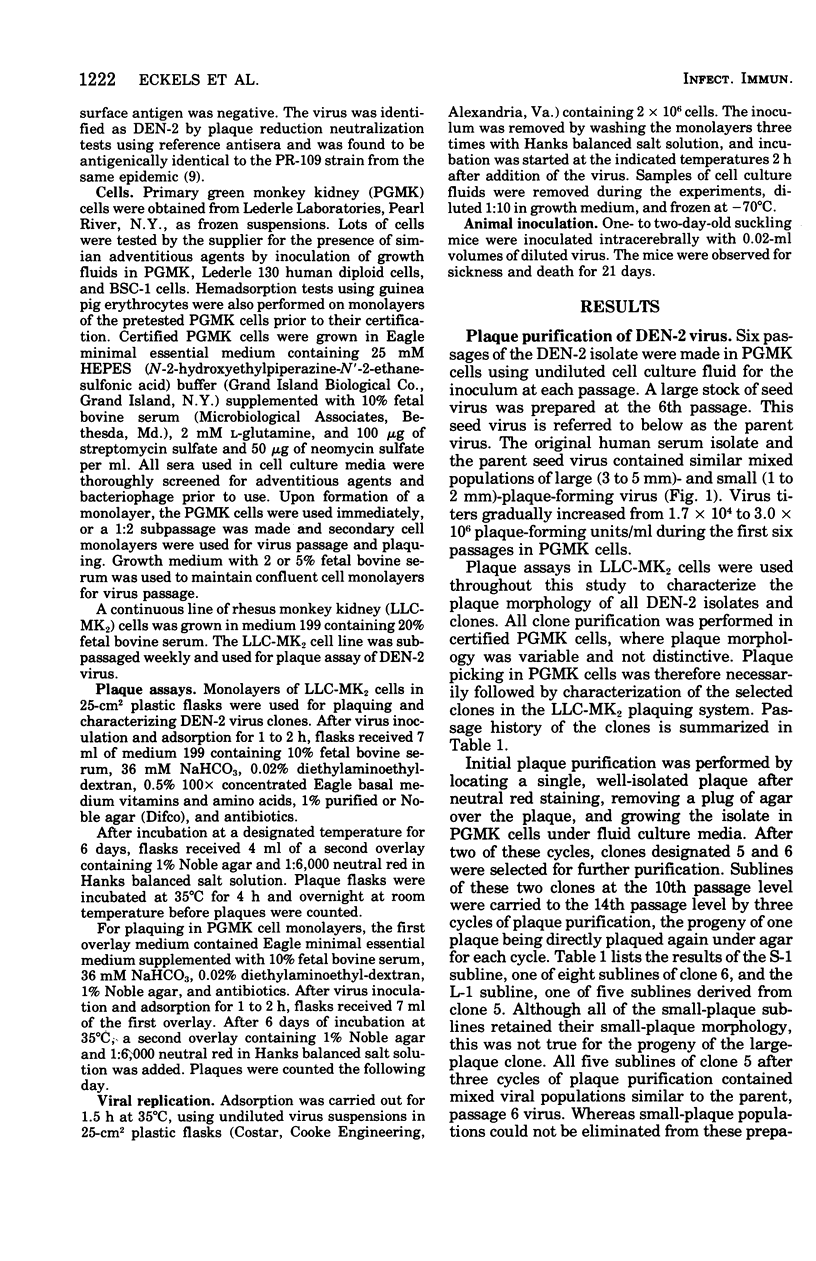
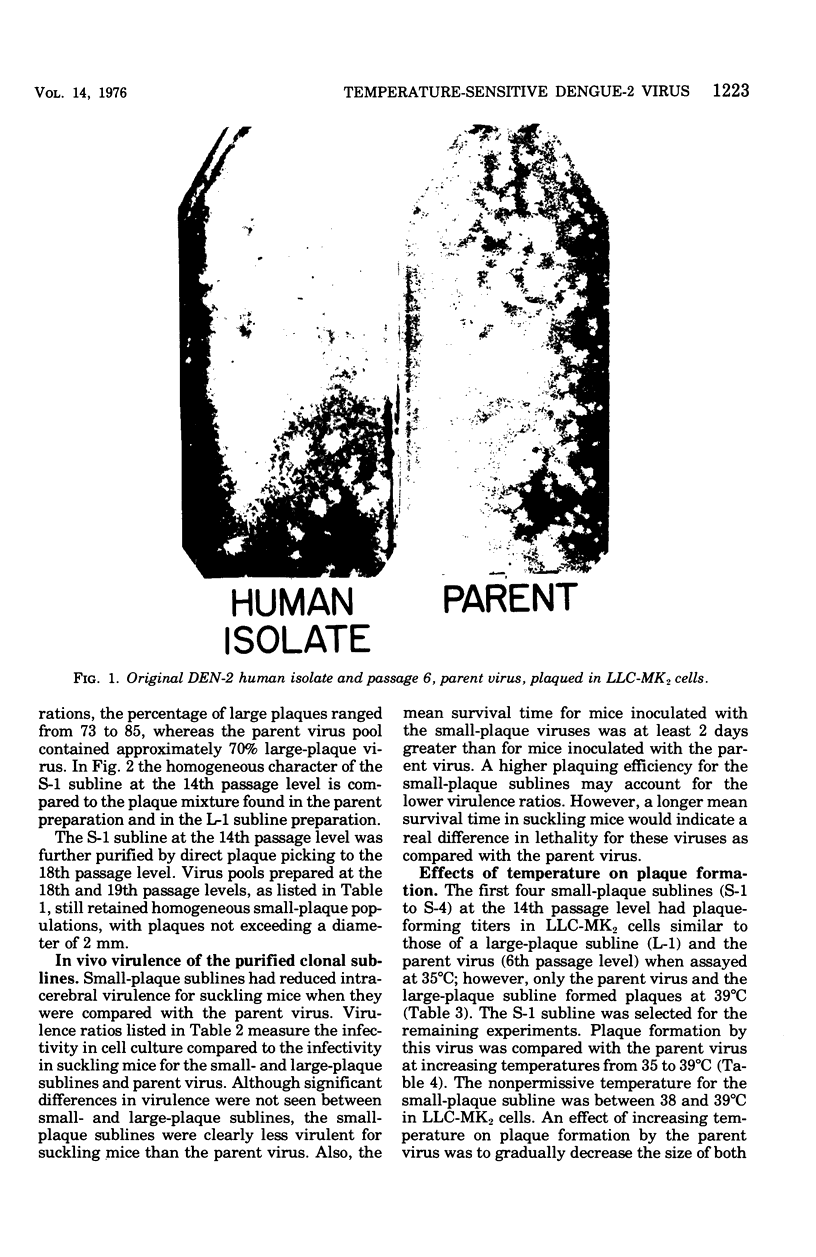
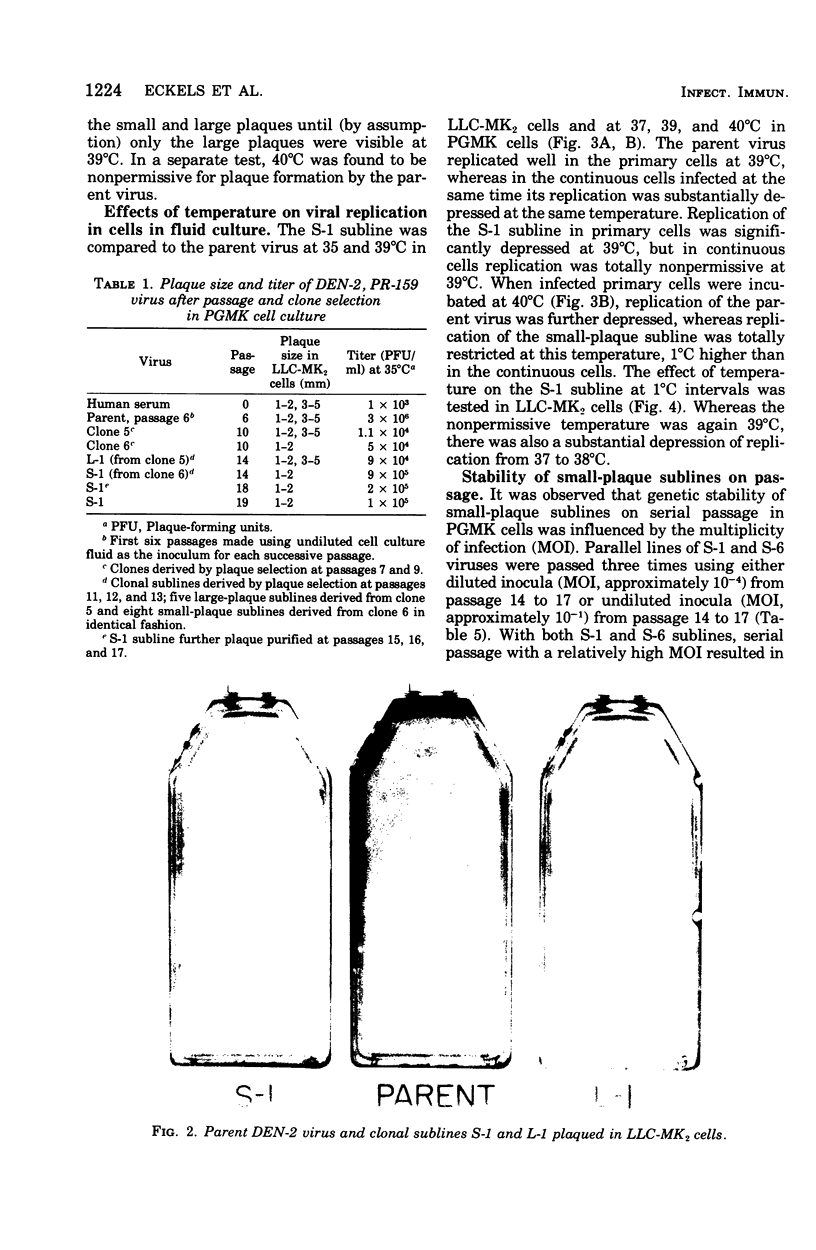
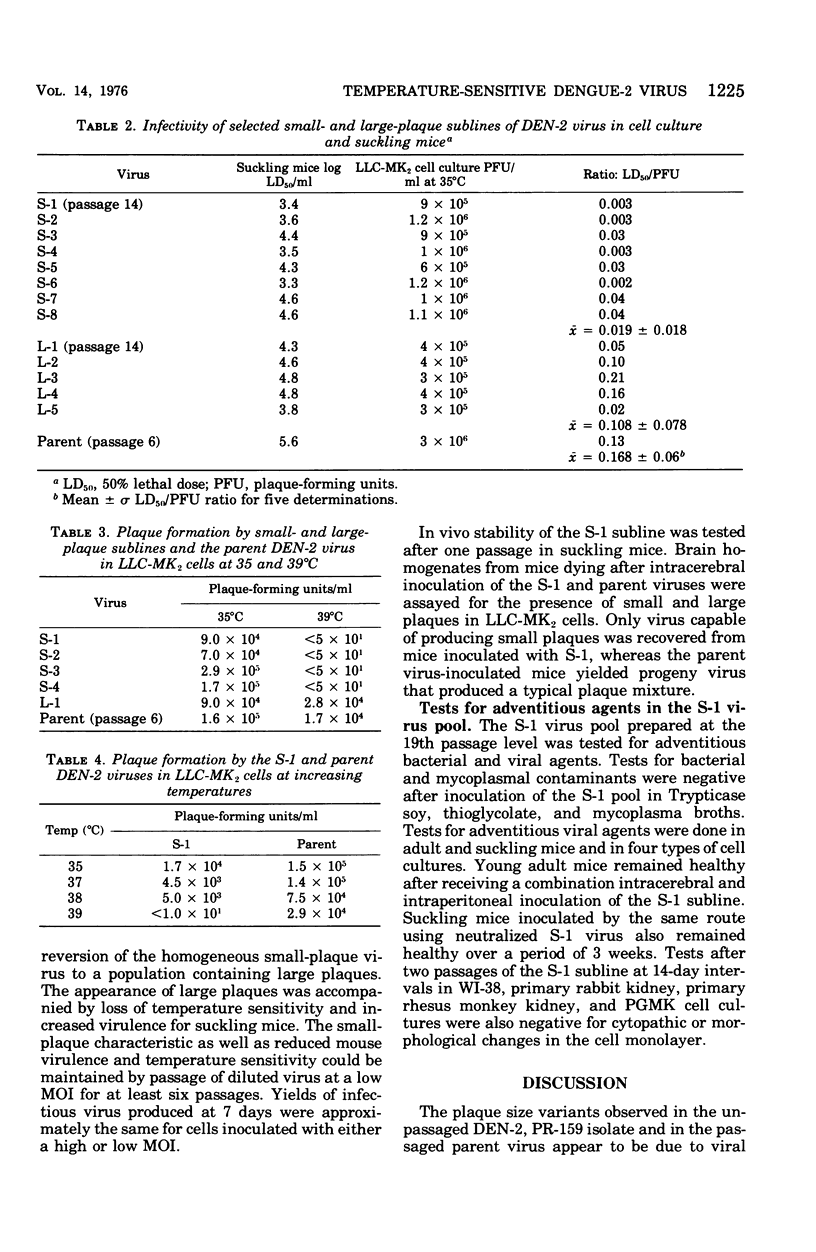
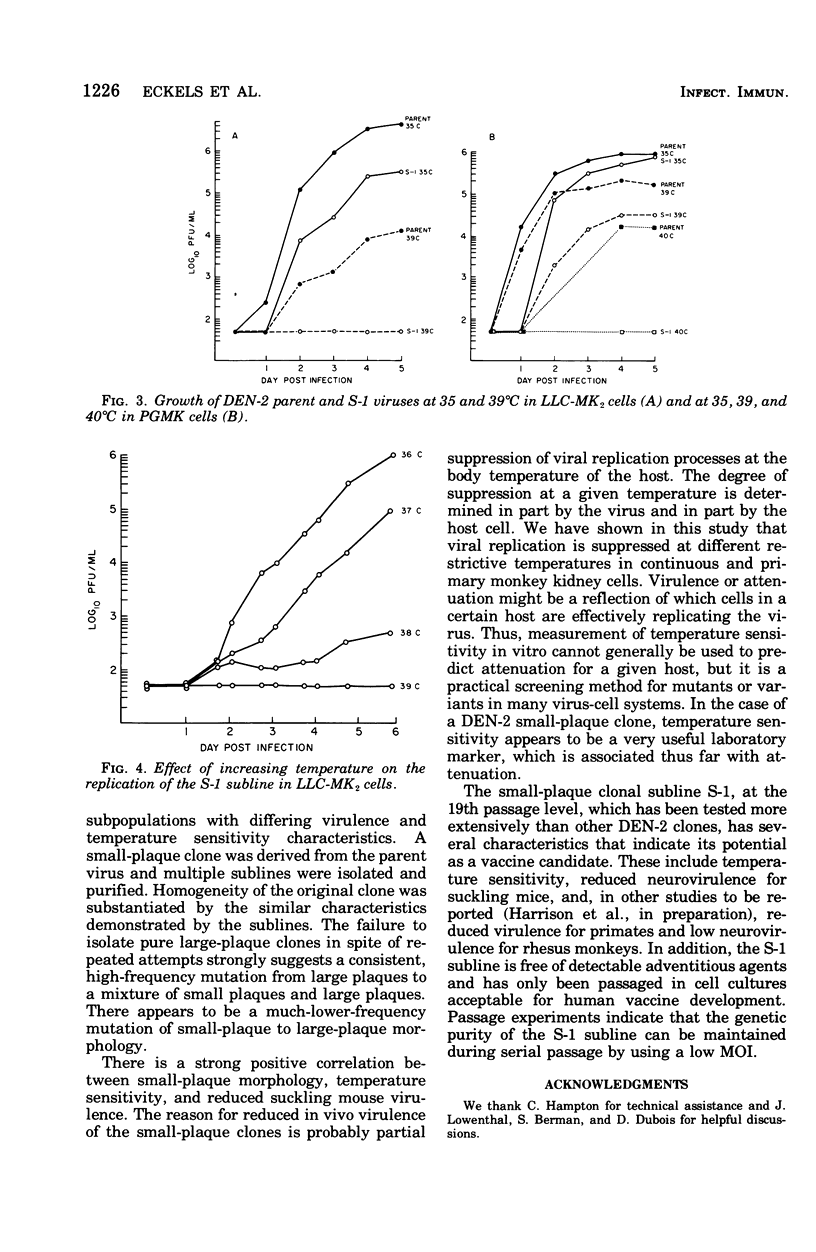
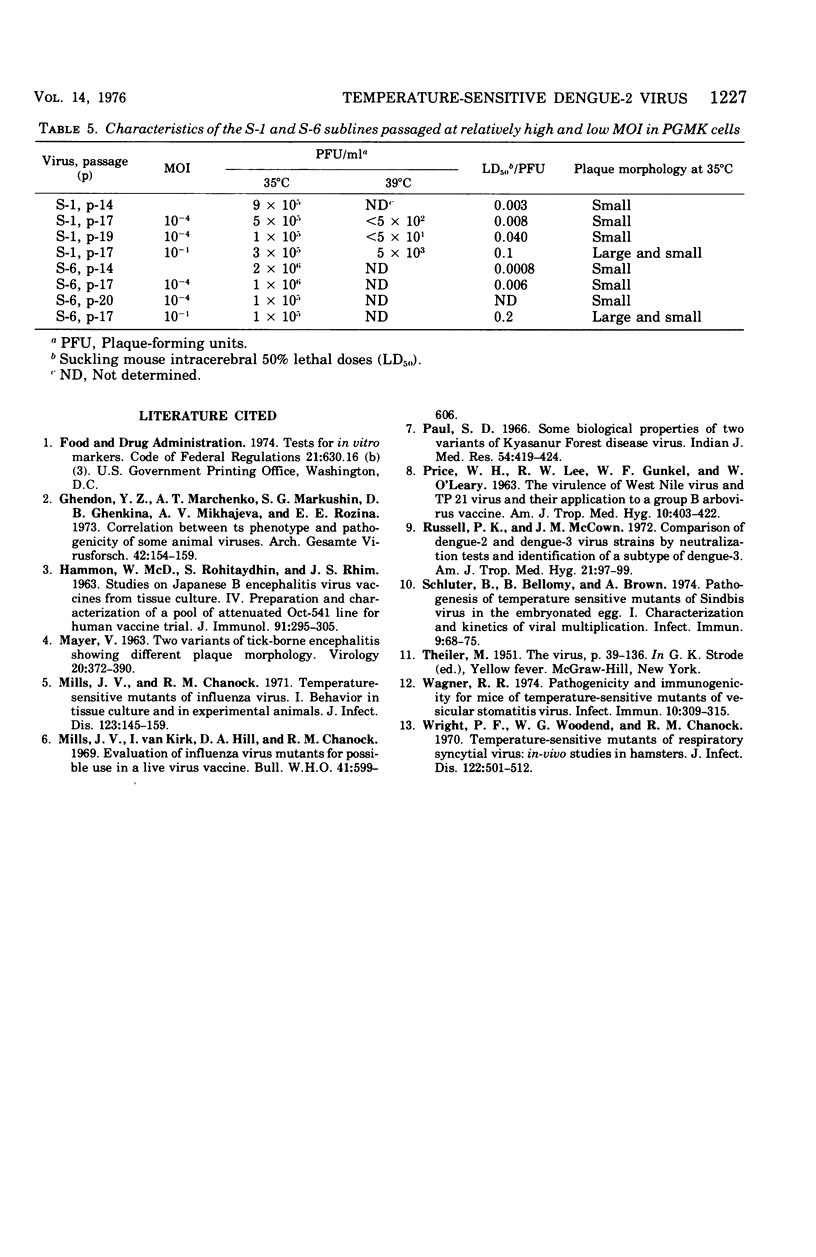
Images in this article
Selected References
These references are in PubMed. This may not be the complete list of references from this article.
- Ghendon Y. Z., Marchenko A. T., Markushin S. G., Ghenkina D. B., Mikhejeva A. V., Rozina E. E. Correlation between TS phenotype and pathogenicity of some animal viruses. Arch Gesamte Virusforsch. 1973;42(2):154–159. doi: 10.1007/BF01270835. [DOI] [PubMed] [Google Scholar]
- HAMMON W. M., ROHITAYODHIN S., RHIM J. S. STUDIES ON JAPANESE B ENCEPHALITIS VIRUS VACCINES FROM TISSUE CULTURE. IV. PREPARATION AND CHARACTERIZATION OF POOL OF ATTENUATED OCT-541 LINE FOR HUMAN VACCINE TRIAL. J Immunol. 1963 Sep;91:295–305. [PubMed] [Google Scholar]
- MAYER V. Two variants of tick-borne encephalitis virus showing different plaque morphology. Virology. 1963 Jun;20:372–373. doi: 10.1016/0042-6822(63)90127-2. [DOI] [PubMed] [Google Scholar]
- Mills J., Chanock V., Chanock R. M. Temperature-sensitive mutants of influenza virus. I. Behavior in tissue culture and in experimental animals. J Infect Dis. 1971 Feb;123(2):145–157. doi: 10.1093/infdis/123.2.145. [DOI] [PubMed] [Google Scholar]
- Mills J., Van Kirk J., Hill D. A., Chanock R. M. Evaluation of influenza virus mutants for possible use in a live virus vaccine. Bull World Health Organ. 1969;41(3):599–606. [PMC free article] [PubMed] [Google Scholar]
- PRICE W. H., LEE R. W., 3rd, GUNKEL W. F., O'LEARY W. The virulence of West Nile virus and TP 21 virus and their application to a group B arbor virus vaccine. Am J Trop Med Hyg. 1961 May;10:403–422. doi: 10.4269/ajtmh.1961.10.403. [DOI] [PubMed] [Google Scholar]
- Russell P. K., McCown J. M. Comparison of dengue-2 and dengue-3 virus strains by neutralization tests and identification of a subtype of dengue-3. Am J Trop Med Hyg. 1972 Jan;21(2):97–99. doi: 10.4269/ajtmh.1972.21.97. [DOI] [PubMed] [Google Scholar]
- Schluter B., Bellomy B., Brown A. Pathogenesis of temperature-sensitive mutants of sindbis virus in the embryonated egg. I. Characterization and kinetics of viral multiplication. Infect Immun. 1974 Jan;9(1):68–75. doi: 10.1128/iai.9.1.68-75.1974. [DOI] [PMC free article] [PubMed] [Google Scholar]
- Wagner R. R. Pathogenicity and immunogenicity for mice of temperature-sensitive mutants of vesicular stomatitis virus. Infect Immun. 1974 Aug;10(2):309–315. doi: 10.1128/iai.10.2.309-315.1974. [DOI] [PMC free article] [PubMed] [Google Scholar]
- Wright P. F., Woodend W. G., Chanock R. M. Temperature-sensitive mutants of respiratory syncytial virus: in-vivo studies in hamsters. J Infect Dis. 1970 Dec;122(6):501–512. doi: 10.1093/infdis/122.6.501. [DOI] [PubMed] [Google Scholar]



